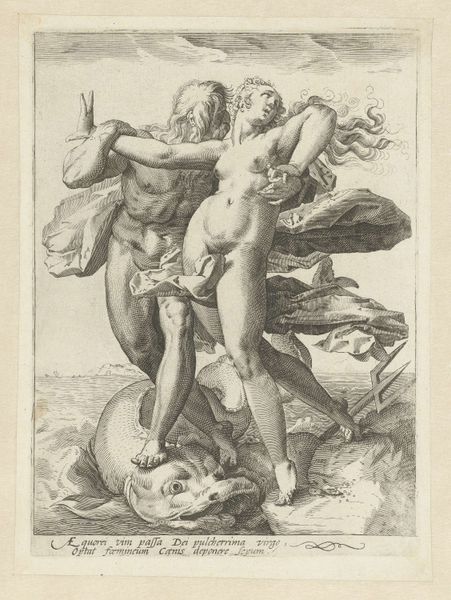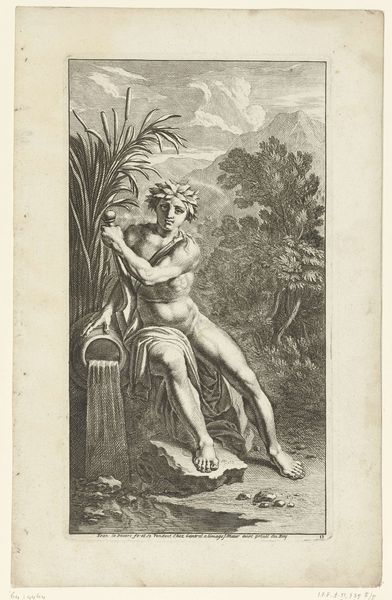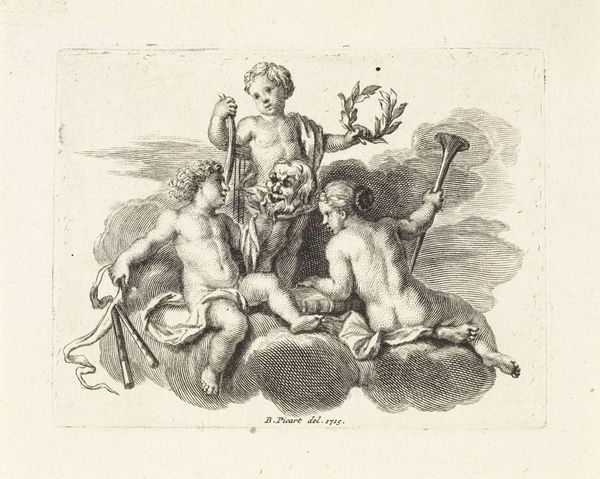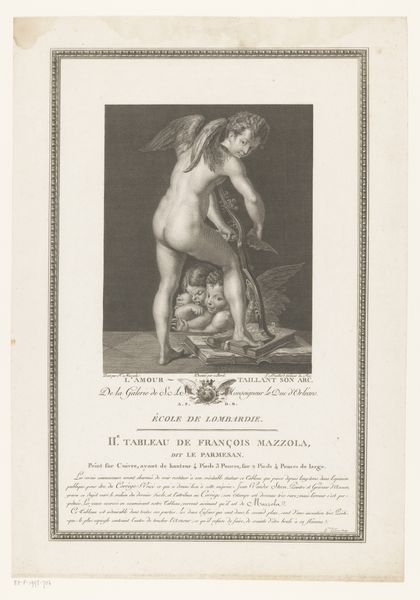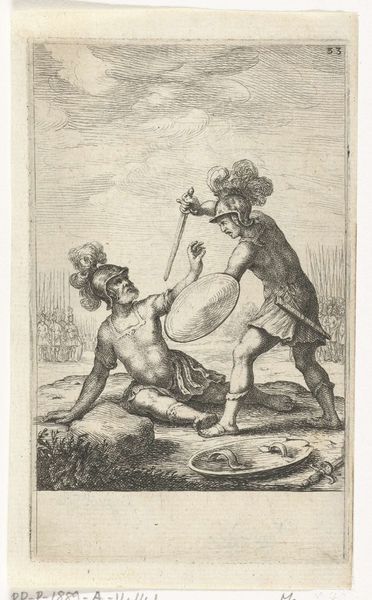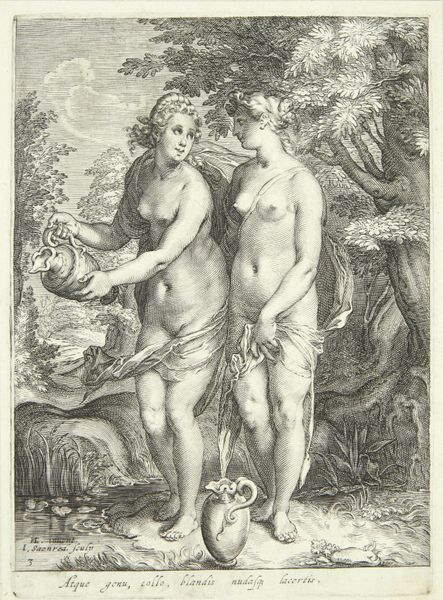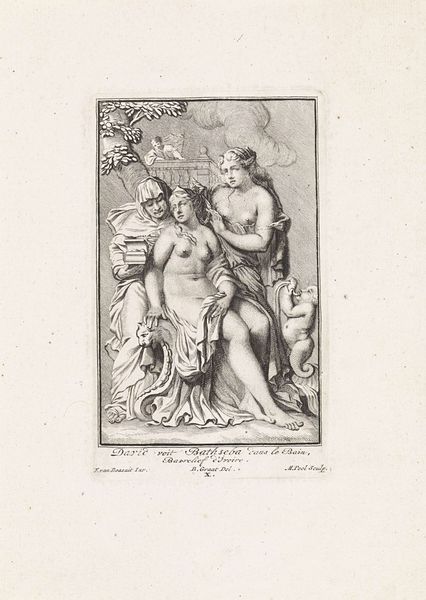
print, engraving
#
allegory
#
baroque
# print
#
figuration
#
history-painting
#
nude
#
engraving
Dimensions: height 152 mm, width 115 mm
Copyright: Rijks Museum: Open Domain
Curator: Here we have Matthijs Pool's "Standbeeld van de Herfst," an engraving from 1727 here at the Rijksmuseum. Editor: It's striking how classical these figures appear despite being rendered in such a graphic medium. They possess a statuesque quality, like forms hewn from marble rather than etched on a plate. Curator: Pool's technique of engraving really shines. Note how he uses varied line weights and cross-hatching to suggest volume and the fall of light on their bodies. This piece also speaks to a wider cultural fascination with antiquity during the Baroque period, evidenced by his allusion to Greco-Roman ideals. Editor: The engraving, presented as two images of the same nude, draws the eye to this double representation. Semiotically, this dual representation underscores the allegorical nature of the figure. She holds what appears to be a cornucopia overflowing with the harvest— grapes, most noticeably—emblematically referencing abundance and the culmination of the growing season. Curator: Beyond the purely visual elements, it’s worthwhile to think about the social and institutional contexts that made such prints desirable. Engravings like this served as readily reproducible artworks. It democratized the consumption of art, reaching audiences far beyond those who could afford original paintings or sculptures. This piece may have functioned within scholarly circles or been a part of academic studies on classicism. Editor: So true, yet that proliferation complicates readings—the availability of art does influence its significance, for artist and audiences both. The interplay of light and shadow within the engraving establishes its own aesthetic framework. Curator: Understanding the mechanics by which this print circulated enhances our reading; each copy held the potential to inspire conversation and shape perceptions about historical allegory and even ideas around nation and trade. Editor: Analyzing the structure of this engraving alongside its art historical narrative creates, for me, a richer encounter than by using just a singular approach. Curator: Precisely! Recognizing the multi-layered history is a great takeaway for considering similar prints.
Comments
No comments
Be the first to comment and join the conversation on the ultimate creative platform.





